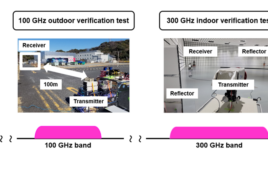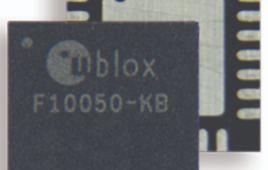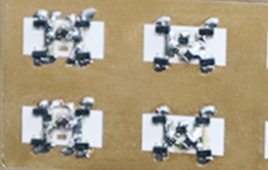Researchers have developed a set of diode-based lidar instruments that could help fill important gaps in meteorological observations and fuel a leap in understanding, modeling and predicting weather and climate. The instruments are particularly well suited for insights on atmospheric dynamics at the mesoscale, a size range equivalent to the area of a small city up to that of a U.S. state.
Collaborators from Montana State University (MSU) in Bozeman and the National Center for Atmospheric Research (NCAR) in Boulder, Colo. will discuss the work during The Optical Society’s Optical Sensors and Sensing Congress, which will take place from 25-27 June in San Jose, Calif., during Sensors Expo 2019.
So far, the team has created five diode-based micro-pulse differential absorption lidar (DIAL) instruments—MPD instruments, for short—for profiling water vapor in the lower troposphere, the region of the atmosphere where most weather occurs. Diode laser based instruments operate in the range of wavelengths from 650 to 1,000 nanometers, mostly within the infrared spectrum. The instruments can be deployed both day and night, largely unattended, without risking eye damage to humans.
“The network of five water vapor MPD instruments was deployed to the atmospheric radiation measurement Southern Great Plains atmospheric observatory in mid-April,” team member Catharine Bunn said. “From this three-month field experiment we will gain insight into how weather forecasting may be impacted by continuous MPD measurements of atmospheric water vapor.
Filling monitoring gaps
Several reports by the National Academies of Sciences, Engineering and Medicine and other expert groups over the past decade have identified a critical need for vertical measurement profiles of humidity, aerosols, and temperature in the lower troposphere. Experts also call for the creation of a “network of networks” for collecting and sharing this data. To provide needed coverage for improved weather and climate forecasting across the U.S., one report proposed deploying an array of sensors on the ground at about 400 sites nationwide spaced roughly 125 kilometers apart.
However, there has been a gap in the instrumentation to meet this vision for research and monitoring without relying on aircraft-based devices, which are expensive to deploy. Building on prior work by other teams and collaborating with NCAR scientists, MSU instrument developers turned to diode-based MPD technology as an economical route to a profiler that could make accurate measurements and fulfill desired specifications for continuous, unattended operation and eye safety.
Demonstrating value in the field
The researchers have developed five different instruments based on a common architecture in which laser pulses are sent into the atmosphere and the return signal, which varies as the light interacts with water vapor, is measured with single photon counting modules. All five instruments are operational and two have been deployed in ground-based weather- and climate-research experiments.
One instrument, developed collaboratively by MSU and NCAR scientists, was fielded as part of the Front Range Air Pollution and Photochemistry Experiment (FRAPPE). The instrument measured the vertical water vapor profile with less than 10 percent mean error over a range of atmospheric conditions, as compared to profiles collected by airborne devices. It also ran unattended for 50 continuous days during FRAPPE with no apparent performance decline, providing about 95 percent data coverage.
The researchers have also advanced toward vertically profiling two other high-interest features of the lower troposphere: aerosols and temperature. Based on the MPD architecture NCAR researchers built a novel high spectral resolution lidar (HSRL) capable of profiling aerosols. Complementing this work, an MSU physicist adapted mathematical techniques from quantum mechanics to solve an equation that opens the door to using measurements of properties of oxygen molecules and other atmospheric data to create a vertical temperature profile. Models and preliminary experiments suggest that in addition to measuring water vapor and other airborne particles, the HSRL can provide measurements needed for fine-grained, high frequency temperature profiling.
During the June Congress, the researchers are planning to provide the latest about their temperature profiling work and other updates on their instrumentation. For now, Bunn said, “We are beginning to retrieve temperature profiles of the lower troposphere with an accuracy of +/- 2 Kelvin and we are working to improve instrument and retrieval algorithm performance.”




